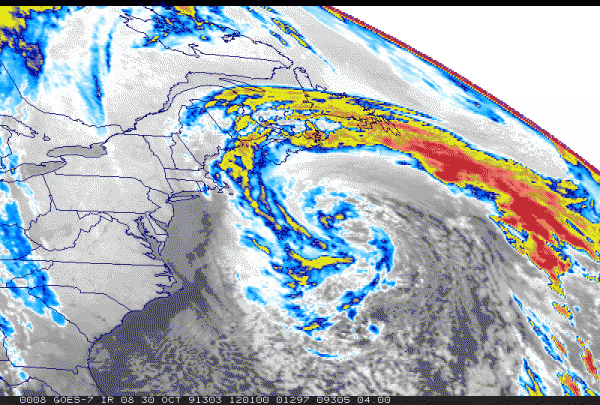The Perfect Storm
On the morning of October 30, 1991, satellite photos showed an enormous extratropical low pressure system that was causing problems along the entire East Coast. The monster storm was labeled “The Perfect Storm by the National Weather Service. It was made famous by Sebastian Junger in his book by the same name that told the story of the swordfishing boat the Andrea Gail and its ill-fated crew.
On October 28th, low pressure was developing along an old cold front off the East Coast. This low would deepen rapidly into the 29th, its circulation large enough to absorb a weakening Hurricane Gracie. By the morning of the 30th, the powerful storm had a central pressure of 972 mb, or the equivalent of a Category One hurricane. It had moved southeastward and then southwestward to a point 400 miles east of the Delmarva Peninsula. As it crossed the Gulfstream on the 31st, it actually attained tropical characteristics, even though it was never named.
The North Carolina coast experienced tropical storm force winds for five consecutive days. On the 30th and 31st, gusts to hurricane force or just below were reported in Massachusetts and New England. Heavy surf up to 30 feet and tides seven feet above normal were reported all along the coast. In Delaware, Maryland and Virginia, the tides were as high as in the March 1962 nor’easter.
Parts of Massachusetts, Maine and New Hampshire were declared disaster areas. AT least ten people died in the storm, including the six crew members of the Andrea Gail.
Category: Uncategorized
















